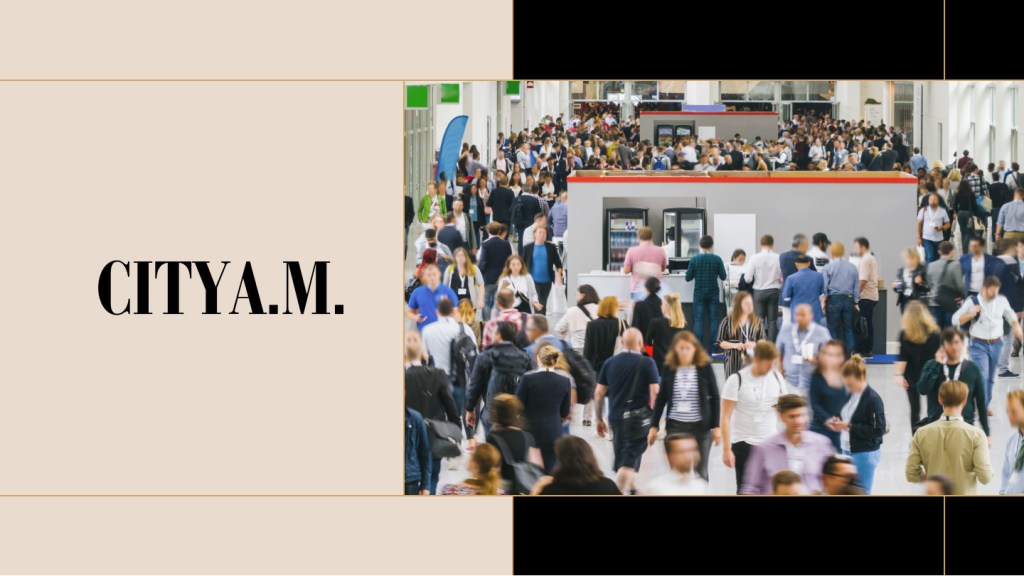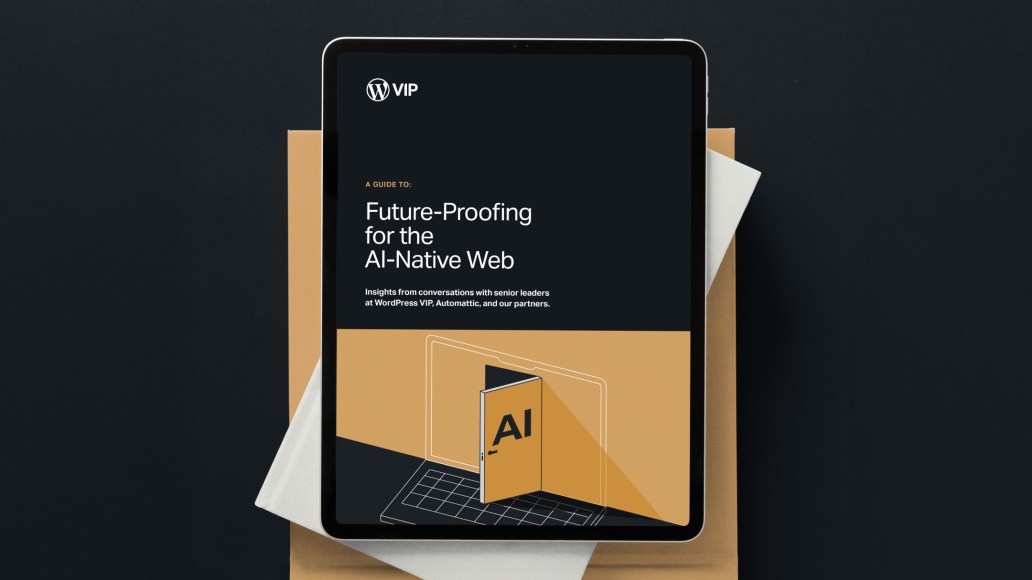City A.M. is the “voice of the City of London.” A long-standing free print newspaper, they provide in-depth coverage of business, investing, insurance, and other topics of interest to commuters travelling into the beating heart of Britain’s financial system each morning. Primarily a print publication, City A.M. historically considered digital a secondary focus. But over time, their custom-built tech stack became difficult to maintain. Worse, it led to a calamitous outage in 2018 that wiped out most of City A.M.’s existing content and left the publication offline for days.
When the UK went into 2020’s pandemic lockdown and their print edition was temporarily suspended, City A.M. knew they needed to upgrade their online presence from a secondary product to serious focus. Working with WordPress VIP and Gold agency partner 10up, they developed a reliable, agile technology stack to support a massive increase in readership, improve the mobile experience, and accommodate future digital growth.
Key Results
- Saw a 3X increase in digital readership
- Served 1 in every 7 London residents
- Improve the digital experience, especially on mobile
- Implement a sustainable infrastructure to avoid service disruption
Business challenge
An antiquated tech stack
City A.M. is first and foremost a print publication, a business built on serving the business community flowing into the City of London each morning. Despite the challenges of the newspaper industry, that business model proved durable and profitable enough for City A.M. to treat its digital presence as a secondary concern..
“City A.M.’s digital tech stack was originally built by a talented team of engineers,” said Miriam Keck, Digital Director at City A.M. “However, over time, as people moved on, we didn’t keep up the right level of investment. It wasn’t the main focus of the business. As a result, things began to fall behind.”
The core of City A.M.’s presence was a custom website built on the Laravel PHP framework. By 2018, the team maintaining this app had atrophied. “The problem with custom-built apps is they take continuous maintenance and development,” said Keck. “They’re expensive to run, and we didn’t have the resources to keep up.”
Inevitably, disaster struck.
In August 2018, City A.M. experienced a site crash. An attempt to restore from backups failed, leaving this site offline for one full week. City A.M. hastily stood up a WordPress site to replace their dark original. After locating a year-old development site with a portion of their content still intact, they began painstakingly restoring older articles to the new site. Much was still lost. The only solution? Analyse every link that was getting a 404 error, and then manually pull the last version of related content from the Internet Archive’s Wayback Machine. Two interns spent months manually reassembling everything. Only in April 2019 did the City A.M. site return to full health.
“We rebuilt our digital presence, yes, but it was a hastily assembled solution,” said Keck. “We wanted something more modern, particularly to improve our mobile experience, which had become quite dated. We had no appetite to do anything custom—the more off-the-shelf the better. It needed to be sustainable, too, whether we’re looking to make digital investments or focus our business elsewhere. In short, it had to be built for the long-term.”
“All our digital editors are comfortable with WordPress. It’s easy to use and lets them get new content up quickly.”
Miriam Keck, Digital Director, City A.M.
Finally, City A.M. wanted a WordPress-based solution. “Moving off a custom Laravel app and onto WordPress was a good move for us,” said Keck. “All our digital editors are comfortable with WordPress. It’s easy to use and lets them get new content up quickly. Staying on WordPress was an absolute requirement.”
COVID-19 changes the calculus
In early 2020, when COVID-19 hit the City of London, City A.M. had to pivot fast. With former commuters now opting to work from home, City A.M. needed to reach their audience via digital rather than print. “At first, we thought, ‘This will be a few weeks, so let’s make sure we’re ready for the spike in digital traffic before things return to normal,’” says Keck. It soon became clear that wasn’t going to happen. City A.M. suspended its print edition to focus entirely on digital.
“We were working with a small agency and a hastily assembled site,” said Keck. “We did our best to keep it together, but we couldn’t get the things we needed done. It just wasn’t going to work long term.”
The solution
Reimagining digital for City A.M.
Once it became clear digital was a critical channel for City A.M., they began the search for a new agency and a new technology partner for their WordPress needs. After evaluating more than 20 agencies, City A.M. selected 10up, a WordPress VIP Gold Agency partner, to redesign their site. At the same time, they evaluated WordPress-based technology solutions and chose WordPress VIP as their preferred platform for the site.
“We looked at what other media companies had done, spoke to others in the industry, and were impressed with both WordPress VIP and 10up,” said Keck. “We decided they could help us build an amazing digital experience.”
Over six months, 10up helped City A.M. build a new site and digital experience on top of the WordPress VIP platform, with the performance, scalability, security, and ease of use they needed—including fully managed backups to prevent a repeat of their 2018 disaster. “Overall the process from conception to launch was pretty smooth,” said Keck.
Mobile as a first-class citizen
City A.M.’s old site had a dated mobile experience. When they hastily rebuilt things in the aftermath of the 2018 crash, going live was more important than mobile presence. Unsurprisingly, this lack of focus rendered the mobile experience “substandard” for the 60% of readers who view the site on a mobile device.
10up helped City A.M. rethink everything. “10up provided guidance on building for mobile and then brought WordPress development expertise to the table to make sure it worked great,” said Keck. “They reinvigorated our front end, which really helped change the game for us.”
At the same time, the mobile user base wasn’t standing still. Much of City A.M.’s mobile traffic came from Accelerated Mobile Pages (AMP), which worked fairly well even on the old front end. As AMP was deprecated by many mobile apps over 2021, the importance of the standard mobile front end increased. Meanwhile, mobile traffic kept growing, rising to more than 75% of site visitors. For these reasons, City A.M.’s mobile investment paid off handsomely, more than originally expected.
Enabling readership growth
The impact of the launch of City A.M.’s new site was immediate. “You always worry about issues or a loss of traffic when rolling out a site refresh,” said Keck. “We experienced none of that. In fact, within days we saw our site traffic increase.”
“During the height of the pandemic, one in every seven Londoners read City A.M. That’s more people than come into the City on any given day. We’ve also seen readership outside the Greater London Area grow—readers we never would have reached outside of digital.”
Miriam Keck, Digital Director, City A.M.
Throughout the pandemic, City A.M. has seen an increase in readership. “Our stories for small businesses, particularly how various pandemic loans work, are extremely popular, not just from our traditional reader base but people who might not have historically read City A.M.,” said Keck. “During the height of the pandemic, one in every seven Londoners read City A.M. That’s more people than come into the City on any given day. We’ve also seen readership outside the Greater London Area grow—readers we never would have reached outside of digital.”
Soon after relaunching their site on WordPress VIP, City A.M. got to witness the chops of their new infrastructure. “It happens that our digital editor lives in Cape Town,” said Keck. “When the Omicron variant emerged there, we were able to provide coverage before many other publications. It was our biggest and most read story ever. With our improved experience and infrastructure, we reach more readers and new audiences than ever before, turn more readers into loyal readers, and give everyone a better digital experience.”
Structuring content to power growth
Opening up new revenue opportunities was a second goal of the site redesign. “We’ve been thinking a lot about both subscription and advertising opportunities,” said Keck. “We don’t know every detail of every business model we might want to pursue, but we need our CMS to be able to support ones we may adopt.”
To realise this flexibility, City A.M. and 10up defined a taxonomy to support future revenue streams. Content is organised with well-defined sections, categories, and tags. Sections give City A.M. the flexibility to associate some with subscriptions and derive additional revenue from their user base. Categories, on the other hand, help create new offers for advertisers. This new taxonomy helps City A.M. continue to evolve their digital strategy.
“Overall, the partnership with 10up and WordPress VIP has been fantastic.”
Miriam Keck, Digital Director, City A.M.
While City A.M. has resumed their print edition as people have returned to their offices, they’ve also built a substantial digital business. “Overall, the partnership with 10up and WordPress VIP has been fantastic,” said Keck. “We’ve substantially improved our experience, grown our digital audience, reached new readers, and built a foundation for future growth. Best of all, we’ve done it all in a way that should be easy to maintain for the long term. It’s much easier to sleep at night with this new tech stack in place.”




